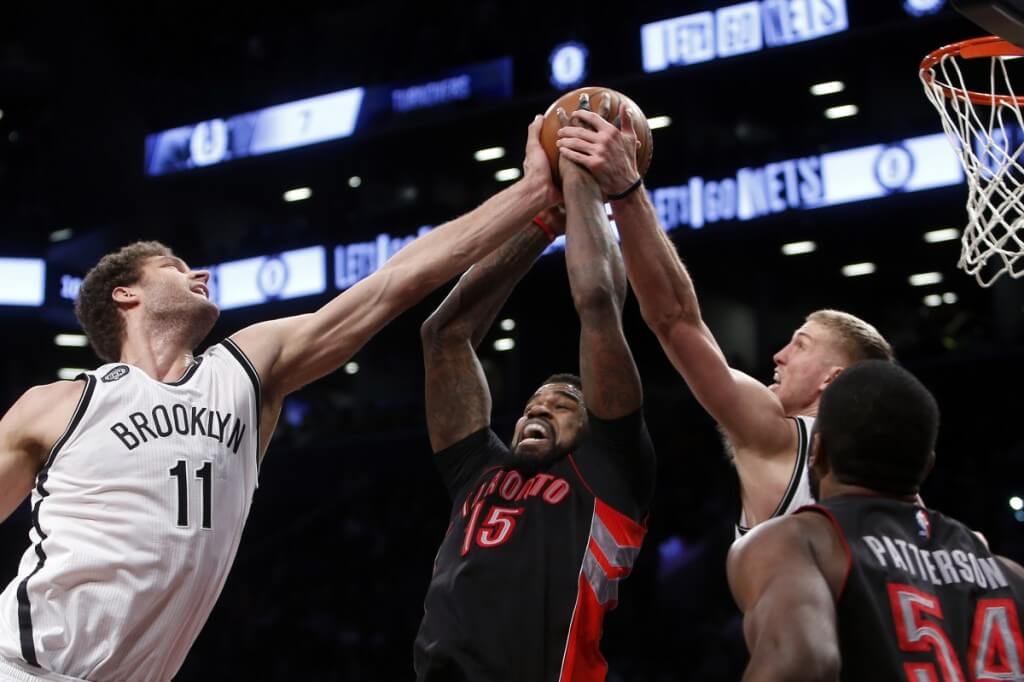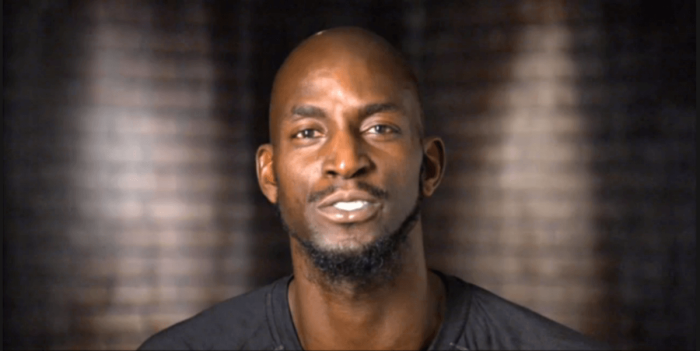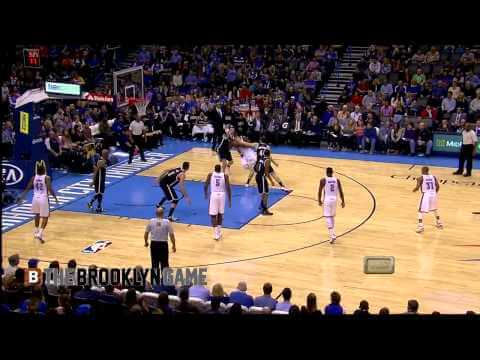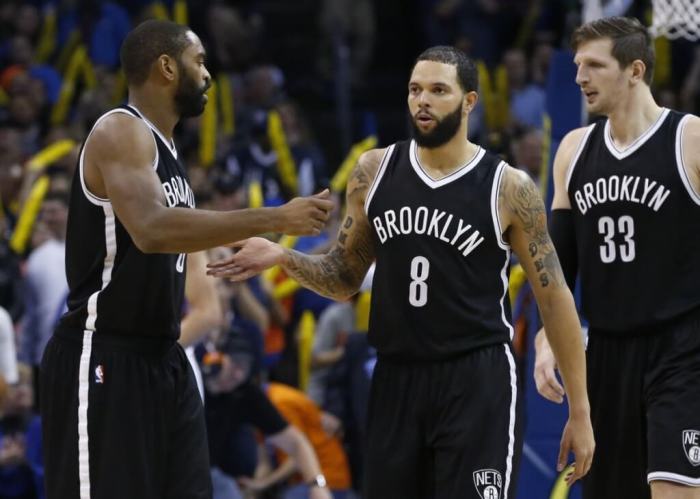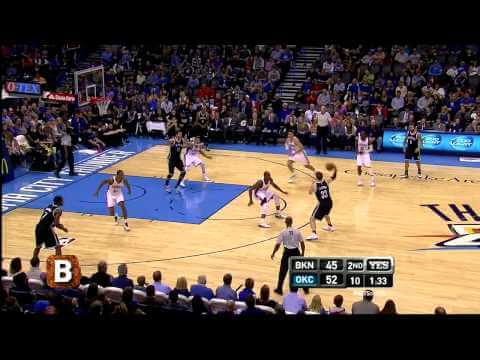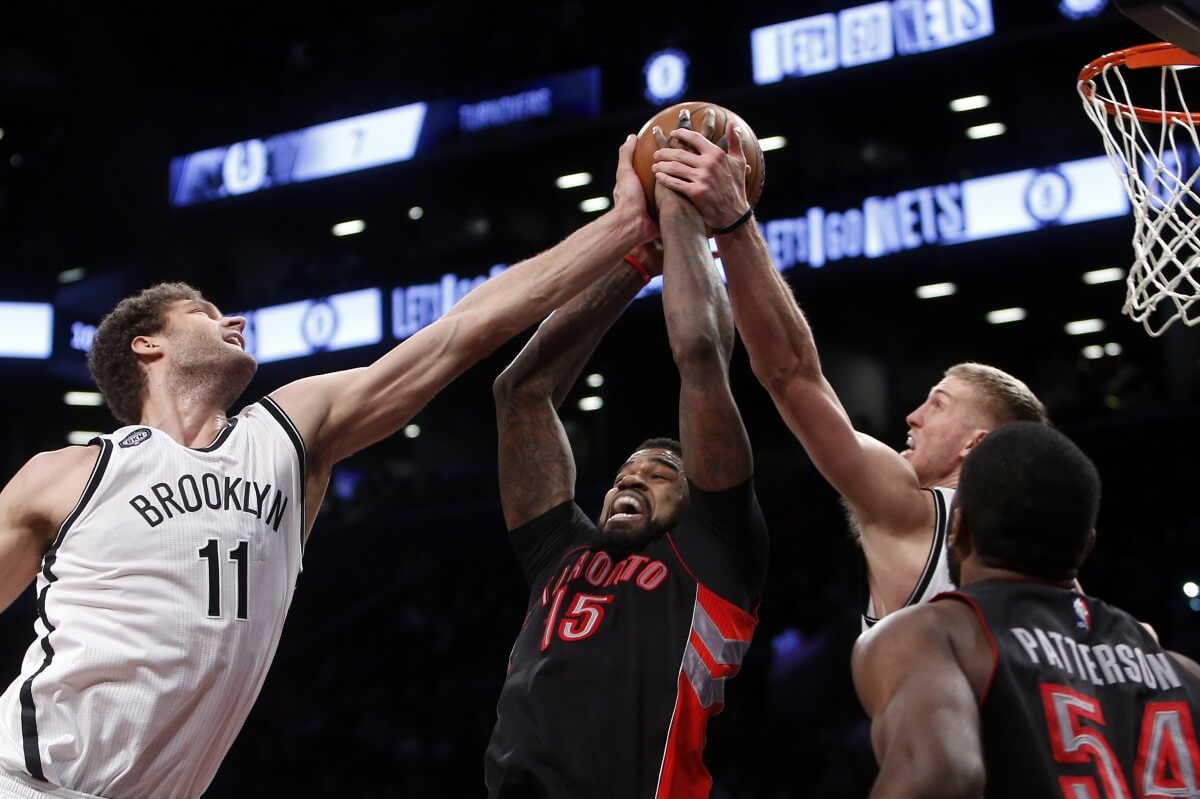
The Nets have trouble rebounding, and it’s lingered as a vexing issue throughout the season. On February 9th, the Bucks out-rebounded the Nets 44-38. 6’3” point guard Jerryd Bayless, who’s averaged a paltry 2.4 rebounds per game this season, out-rebounded seven-foot center Brook Lopez, 6 to 5. On the previous Saturday, a burly Wizards frontline anchored by Nene, Marcin Gortat, Kris Humphries, and Kevin Seraphin, led Washington to a decisive 51-38 advantage on the glass.
Lionel Hollins has underscored the rebounding problem when addressing the state of the team. In mid-December, he lamented the team’s 8-11 start and said, “We have some deficiencies. The rebounding one is huge.”
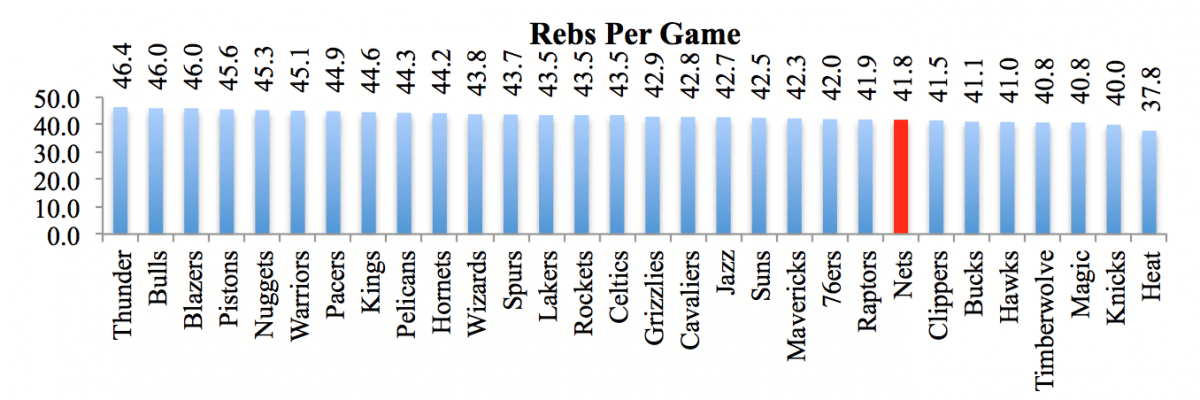
Twenty-two teams rank ahead of the Nets in rebounds per game. That’s obviously not good. But it represents just a piece of the full picture. Total team rebounds per game is a function of two factors –the number of rebounding opportunities presented, and the portion of those chances capitalized on. A complete picture of rebounding efficiency accounts not just for total rebounds captured, but also the number of opportunities available in the first place. In other words, you need to look at rebounding chances, and the conversion rate of those chances into actual rebounds.
That picture looks even worse. Only six teams convert a lower percentage of rebounding chances into successful rebounds than the Nets, according to the NBA’s data. Their biggest issues lie on the offensive glass, where the Nets’ 23.1 percent rebounding rate ranks 25th in the league. They’re slightly better on the defensive end, ranking 20th with a 73.9 percent rate.
The question is why. Conventional wisdom says rebounding is about hustle and size. And player positioning – literally how close the Nets are to the rebounding opportunity – may play a role too.
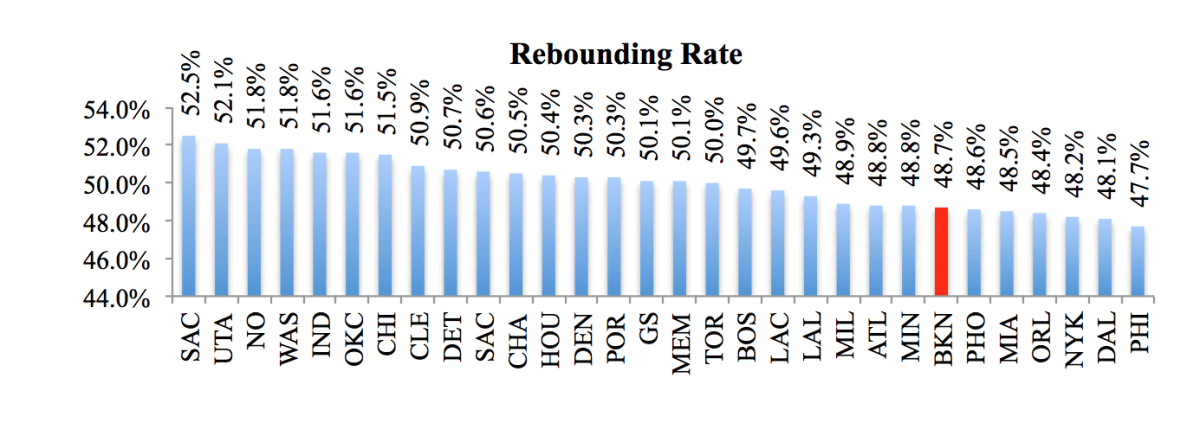
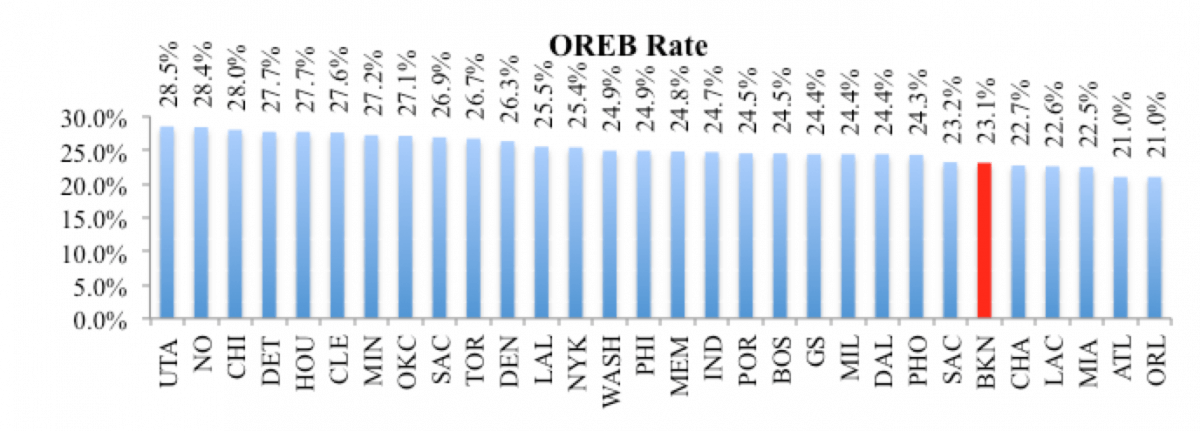

Given Lopez’s historical rebounding struggles relative to other centers, it would be easy to point to him as the culprit here. But Lopez is actually a part of the lineup that rebounds most productively for the Nets — Deron Williams, Joe Johnson, Bojan Bogdanovic, Mirza Teletovic, & Lopez — per Basketball-Reference. Mason Plumlee, unquestionably more athletic on the glass and widely considered a better rebounder, is actually a member of the least productive rebounding group — Jarrett Jack, Johnson, Alan Anderson, Kevin Garnett, & Plumlee.
That’s not to say that Lopez is a good rebounder or Plumlee isn’t. Neither is true. The point is that the rebounding problem transcends Lopez. It’s a team issue.

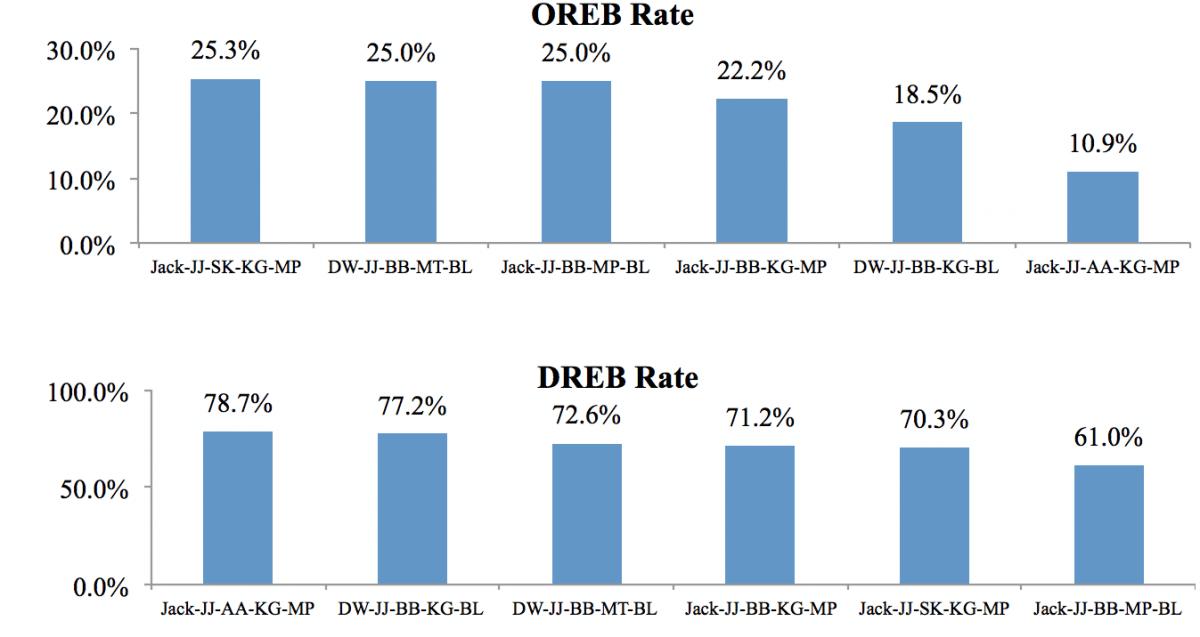
The final piece of this puzzle, which seems to throw the whole picture on its head, is a SportVU stat that tracks rebounding success rate specifically for chances within 3.5 feet: nearby missed shots. Based on everything above, you would think the Nets rebound sluggishly when the opportunity is close by, since their overall conversion rate is low.
But the Nets do a strangely excellent job of converting opportunities within 3.5 feet, and their 61.3 percent success rate ranks them 7th in the NBA. The problem there is that they don’t see a lot of chances within 3.5 feet in a given game, ranking 27th in the league with 68.4 opportunities per game.
This, of course, begs two questions – (a) if the Nets are really good at rebounding when the ball is within 3.5 feet, then why do they struggle mightily when the opportunity is more than 3.5 feet away, and (b) why do other teams see so many more rebounding chances within 3.5 feet per game?
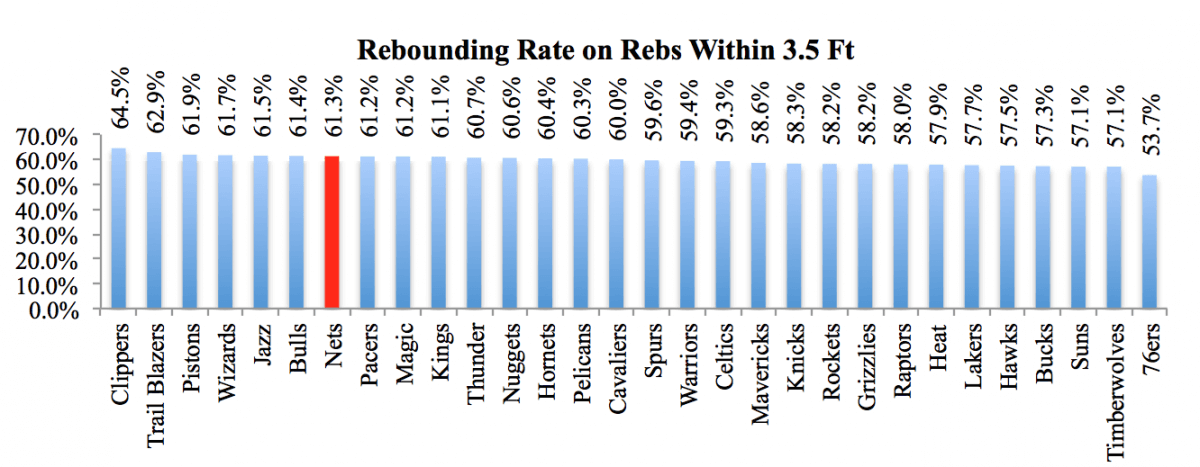
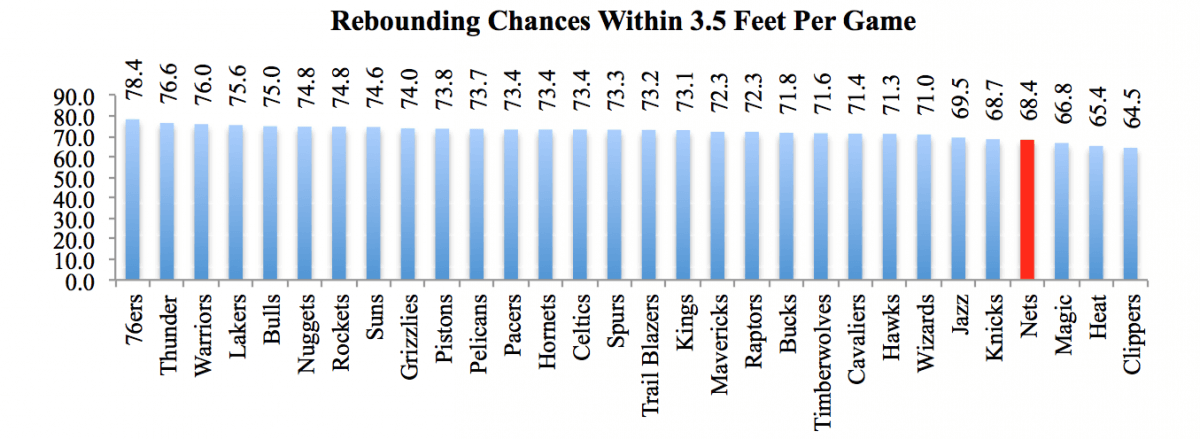
Positioning is key to understanding the Nets’ poor rebounding percentage. When the rebound caroms close by, the Nets rebound better than most the league. In other words, when the Nets get themselves into solid position, they capture the ball more proficiently than opponents. The problem is the positioning part. The Nets aren’t giving themselves enough close rebounding chances. Too many rebounding opportunities are left to wither far away. That means either the Nets aren’t anticipating where rebounds will bounce, or they’re anticipating the bounce but not fighting hard enough to move themselves to the right spot.
While bad positioning explains why the Nets’ rebounding percentage is low, pace is the reason the Nets see an abnormally low absolute number of rebounding chances. The Nets don’t take a lot of shots. They rank 24th in field goal attempts/game, at 81.4. Given the Nets’ plodding style and relative lack of a transition attack, the slow pace isn’t surprising. As the Nets slow the game down by utilizing shot clock, in turn they slow opponents down too. Only 12 teams allow opponents fewer field goal attempts per game than the Nets.
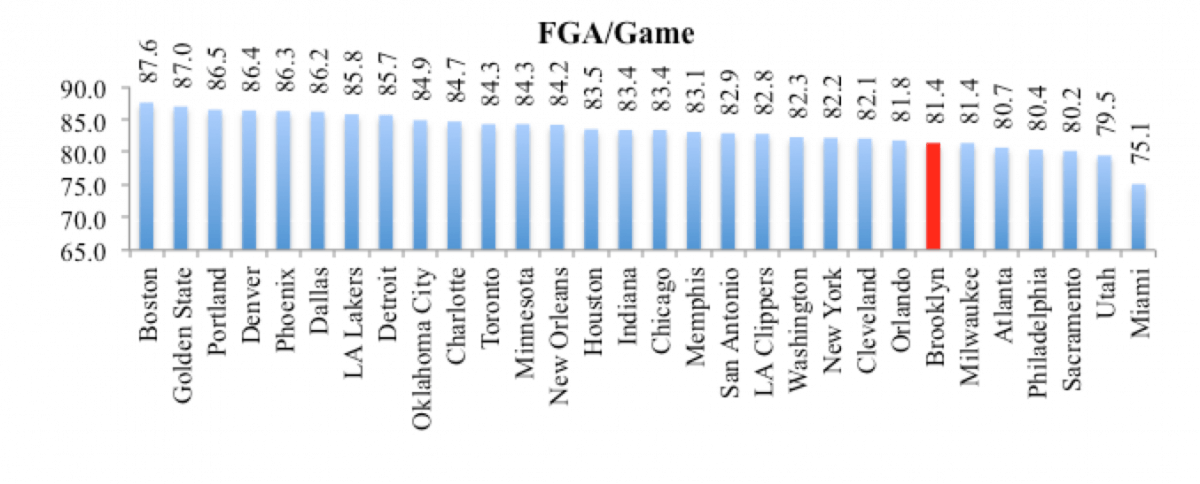
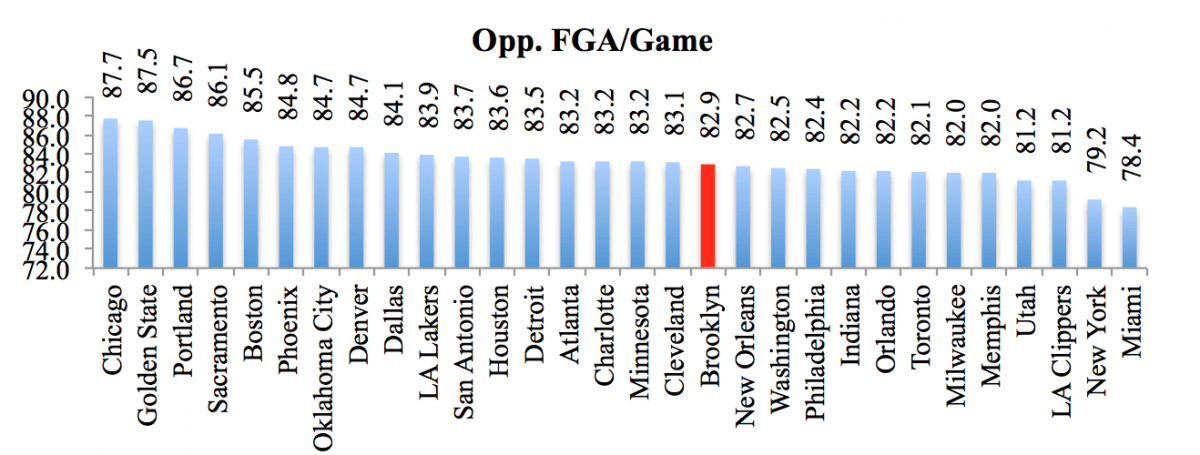
In the brief renaissance after the horrible West Coast trip, the Nets entertained mild success rebounding. They out-rebounded the Knicks once and the Raptors twice. But they fell short in net rebounds against the Hawks and the Clippers, and took a step back against the Wizards and Bucks.
As the Nets try to salvage a playoff push after the All Star Break, moving up from the bottom tier in rebounding rate and crashing the offensive glass with moderate efficiency could only help the cause.

